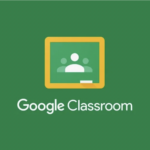The MOOC I took part in was the course GEOG 3991: Global Climate Change and Regional Impacts from Thompson Rivers University’s Open Learning Campus. It is very very well organized and it is clear they have done a lot of trial and error to get to how the courses are laid out now. From the date you register in the course, you get 30 weeks to complete all of the content. There are 8 modules, with 3 sub topics per module. At the end of each module, there is a lengthy discussion post associated with the topic. There are also essays due at certain points to sum up all material learned to that point, a mid way quiz, and a final project.
There is little to no interaction throughout the course, other than feedback on assignments from the professor, however there was no discussion between me and the professor, only their comments on the marking rubric. There are hundreds of other students in the course at the same time as they are all online asynchronous and starting at different times. I was able to see my peers’ discussion posts and such, but never interacted with them.
The assessment was very fair, and marking rubrics were available to look over before you even started your assignment. There is a whole tab in the course introduction page dedicated to how you will be assessed for each assignment (specific for each course) as well as guides for essays, discussion posts, and projects for how to be successful. I felt very well supported in how many resources I had available to me to understand assignments, without ever having to ask the professor.
Because of the courses structure, most of the learning comes from readings and videos you watch. None are pre-recorded lectures, but instead are informational videos from youtube the course designer found to fit with the learning. The designers were insanely smart in asking students to keep a journal for the course, and then creating focus questions to go along with every topic, so 3/module x 8 modules = 24 sets of 4-10 focus questions. These focus questions sort of act as the yellow brick road through the course as it really got me thinking metacognitively, drawing on prior knowledge, and digging deep into the reading/video. As if they hadn’t deconstructed the course enough, throughout each topic they have placed “learning activities” where you use information from the readings to think critically and creatively about a certain problem or scenario.
Finally, this course would definitely be an xMOOC as there was very little about any of my contribution in the course that made my learning specifically, special. It was very well structured and easy to follow, but I didn’t contribute anything to the growth of the course, or the community of learners taking the course at that time.
Reflection
I chose this activity because I have just finished a couple MOOCs from TRU’s open learning. Having these courses under my belt really helped me understand all of the readings and allowed me to draw on my own experience to more easily conceptualize the material.
Connection to Goals
How can open learning work effectively for primary aged learners (K-3)?
- This course would definitely not be accessible to K-3 learners, obviously because of the content. Also, although it is laid out very well, and structured clearly, it is done so assuming a university aged student is going to work through it and not a primary student.
- The way that they have deconstructed the course and broken it down into smaller bits over and over again was super cool to see as that is something that would benefit younger learners. If there were videos/recordings all throughout that explained the instructions of what they were doing, I could see how they would be able to follow along with this format, given some adjustments
How can open learning be used to support Social Emotional Learning (SEL)?
- Many of the learning activities we completed had SEL written into them. Getting us to change perspectives, intentionally look for false articles or pseudoscience myths in order to put ourselves in the shoes of those who believe them, helped me greatly to understand why so many people don’t believe in climate change.
How can Universal Design for Learning (UDL) guidelines be applied to open learning?
- This course was very accessible, and I think it was also intentionally formatted so that a screen reader tool (an accomodation for those with visual impairments) would easily and understandably be able to read out the screen
- None of the journaling was “necessary” by means that no one was ever going to read your journal. However, all of the focus questions and learning activities were put there for students to gradually record their learning before the assignment, discussion, project etc., came along, so they had a record of everything in the module to work off of before they started the big task at the end of the module.

